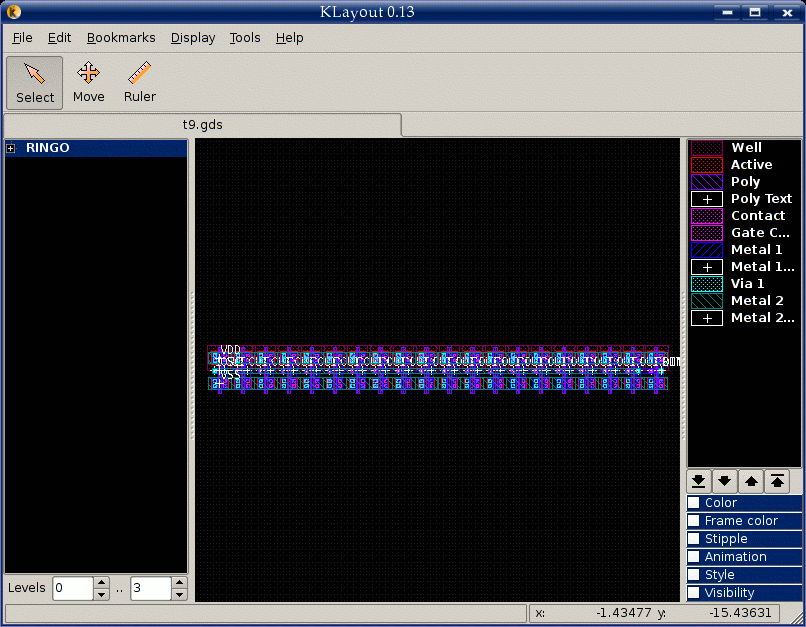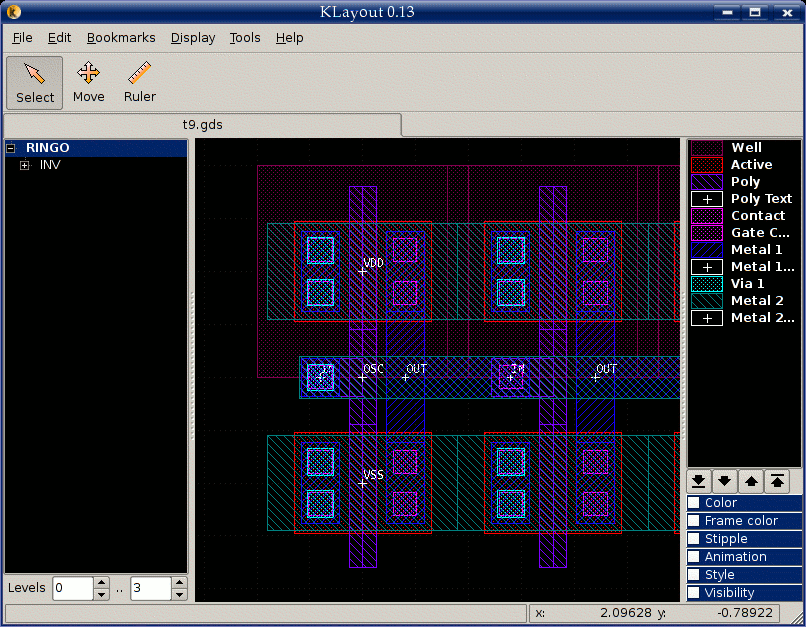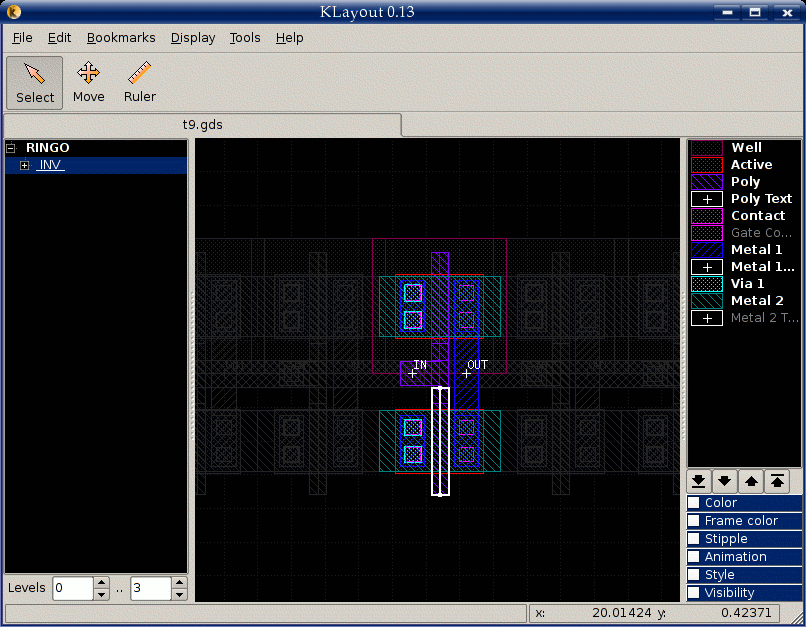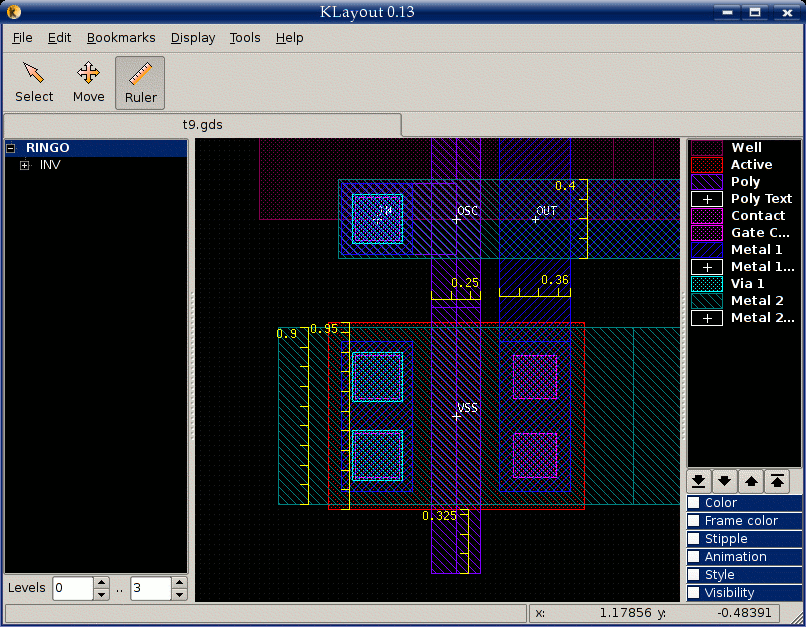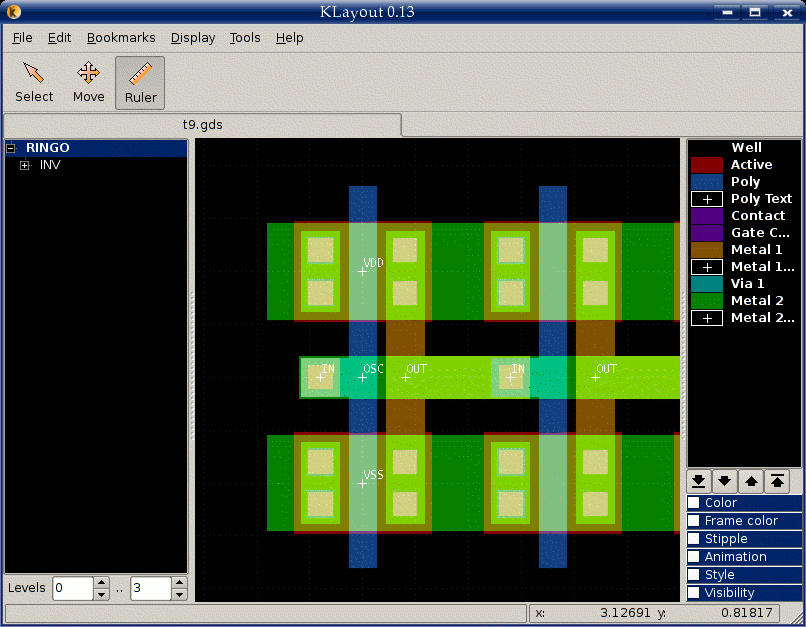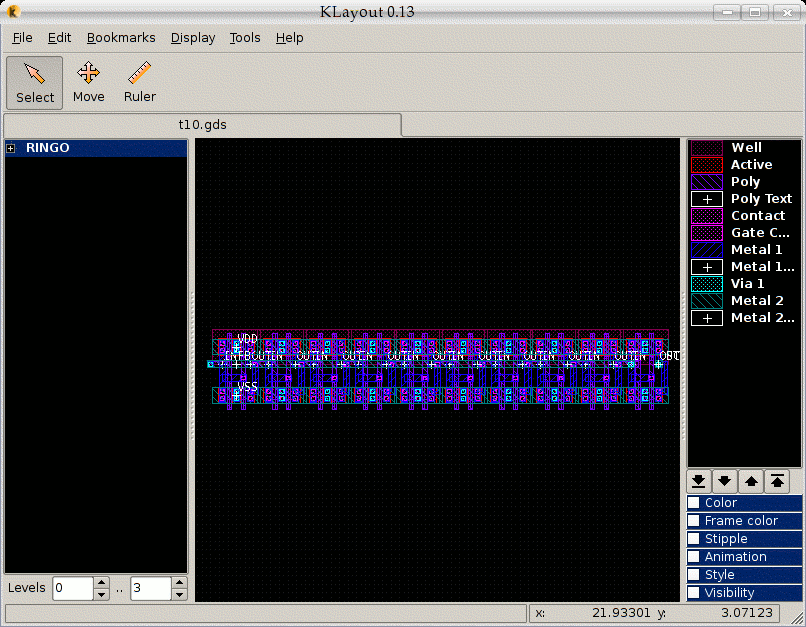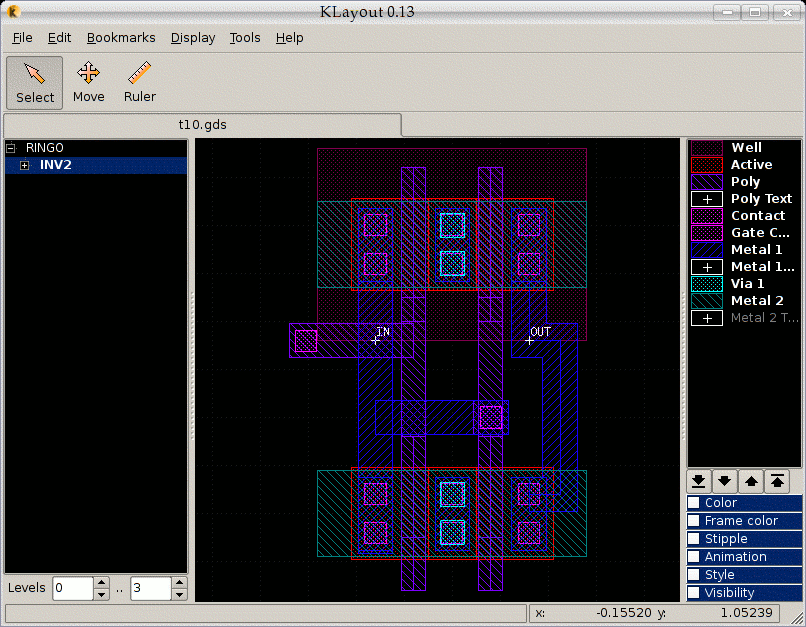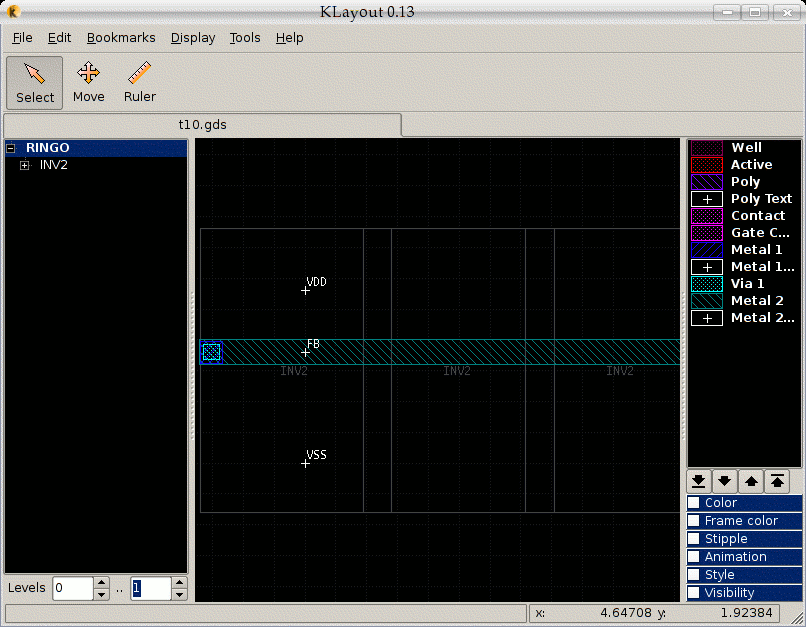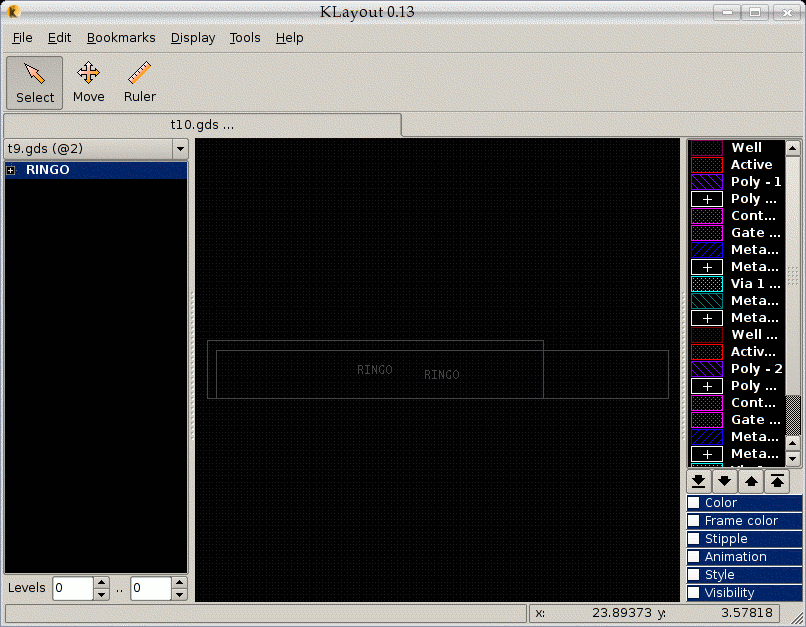KLayout Screenshot Gallery
|
First Example |
|
Second Example |
The following screenshots show some example layouts from a hypothetical technology and a hypothetical layout (hypothetically a ring oscillator).
For a full view, click on the screenshot images.
First example
The first example is a simple design consisting of 20 inverter cells lined up and connected with their outputs to the inputs of the next. The feedback connects the output of the second-last inverter to the input of the first. The last inverter is used as a buffer for the output signal.
Since we use a odd number of inverters, there is no static state the circuit can settle to. Instead, the circuit will start to oscillate with a frequency determined by the delay of the inverters.
For practical purposes however, one would need a more elaborate design. Please note, that this is a hypothetical and not a real-world design.
This screenshot shows the design in full view:
This screenshot shows the single inverter cell:
This screenshot shows a zoomed view of the full circuit:
This screenshot shows the "inv" cell in the context of the "ringo" top cell. The shape that "Descend" was applied to is highlighted.
This screenshot shows the top level only. Note how the inverter cells are connected:
This screenshot shows a partial view with some measurements:
This screenshot shows a partial view with transparent layers:
Second example
The second example is the same circuit with a area optimized layout. In this example, two inverters are made into a single cell sharing the source contacts with each other. This way, one transistor spacing is saved. The price to pay is the larger height required for the wiring.
This screenshot shows the design in full view:
This screenshot shows the single dual-inverter cell:
This screenshot shows a zoomed view of the full circuit:
This screenshot shows the top level only. Note how the inverter cells are connected:
This screenshot shows both designs loaded into the same view. The area advantage of the area-optimized design is clearly visible:












